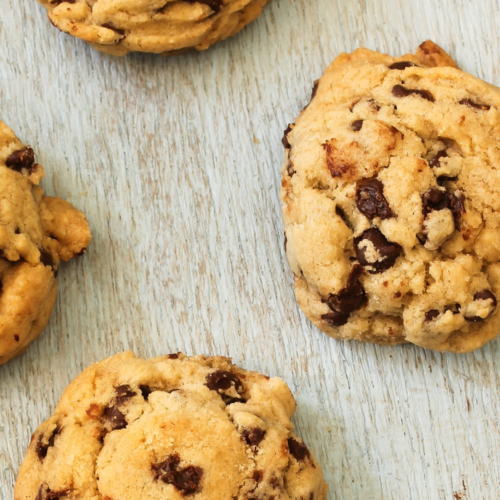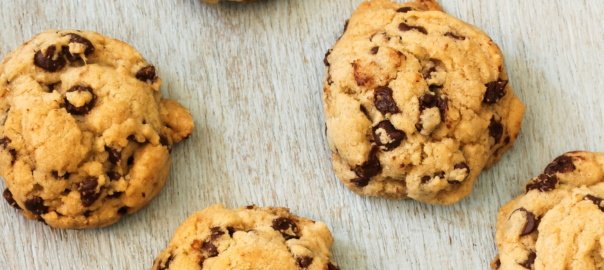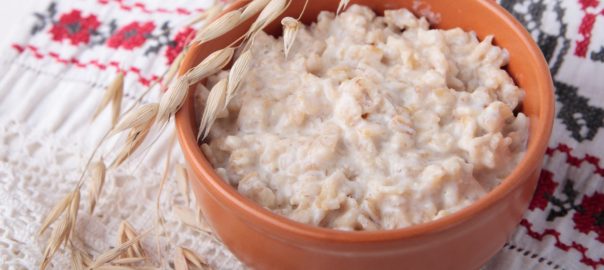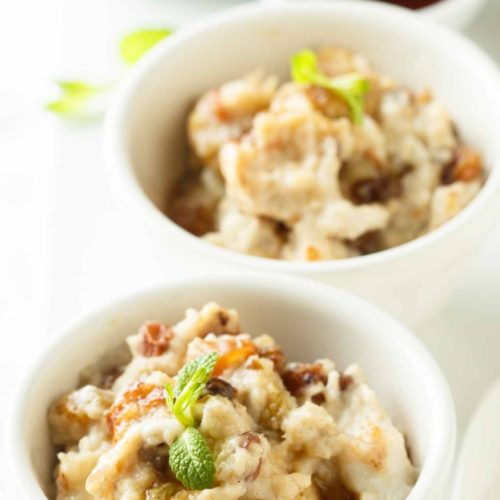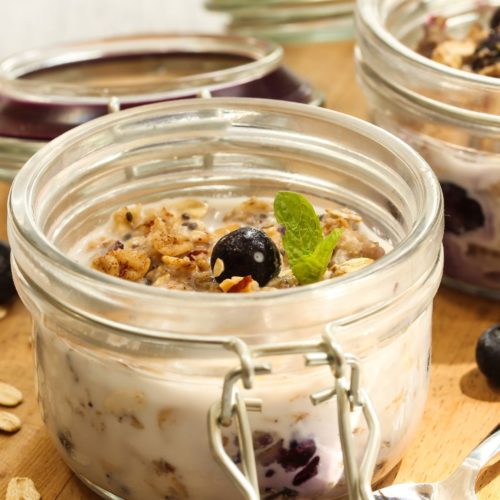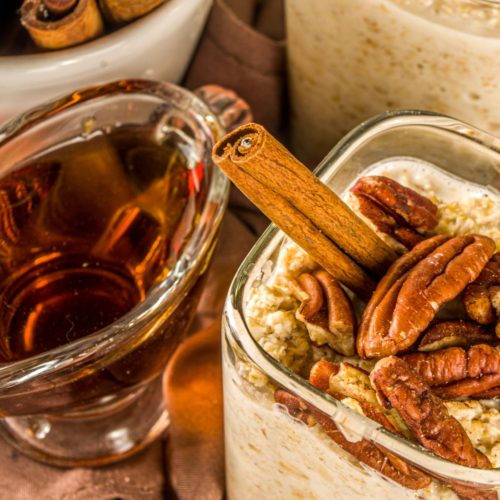Winter is coming and those colder days seem like the perfect time for a bowl of oatmeal in the morning. I frequently get questions wanting to know if oats are okay to eat. The answer? It depends.
Oats have been consumed for more than 2000 years in many places around the world. There is good reason for this; it’s because of the many health benefits of this grain. Some people may not choose to consume oats because of concerns about carbohydrates. But as long as you do not have a sensitivity or a dietary protocol that calls for you to avoid them, oats are a wonderful food and are can be good for us.
The health benefits of oats
Scientific studies of the health-beneficial properties of oats show the benefits of them can include:
- the ability to reduce cholesterol
- may help reduce cardiovascular disease
- can help stabilize blood sugar
- supportive for improved gut microbiota colonies
- may help reduce obesity
- possibly support reducing inflammation
Nutritionally oats provide manganese, selenium, tryptophan, phosphorus, magnesium, and several B vitamins. They even provide a modest amount of protein (6 g per cup). And they’re high in both soluble and insoluble fiber.
Soluble fiber is easily digested and helps the body by slowing down how quickly it can process simple starches and sugars. Soluble fiber also breaks down within the digestive tract, binding with cholesterol and thereby escorting it out of the body.
Insoluble fiber cannot be digested and helps to create bulkier stools which move through the system more quickly. They also help mitigate certain bile acids.
Do oats have gluten?
When it comes to oats there are two questions I get asked a lot
- Do oats have gluten
- What’s the difference between oats and barley
Oats and barley are not the same, they are two completely different grains. Barley has gluten so if you have gluten intolerance issues or Celiac Disease (CD) you cannot eat it, ever. If you think you have CD, I encourage you to get genetically. If you do not test positive for Celiac Disease but feel that there is a gluten intolerance, you’ll want to work with someone as you go through an elimination diet.
When it comes to oats all of the research I have found indicates that oats do not have gluten in them. However, they are frequently grown near wheat or processed in the same facility as wheat or transported with wheat. This means that cross-contamination is an issue. For those with CD there are concerns that the proteins in oats may still present a problem. It is recommended that they be added to the diet with caution and only after all CD symptoms are resolved and there has been adherence to a strict gluten free diet for at least six months
There are some companies that advertise gluten-free oats. They keep separate gluten-free facilities if they happen to produce gluten-containing foods as well. If gluten is an issue for you it’s important to get certified gluten-free oats to be sure there’s no cross contamination.
Different kinds of oats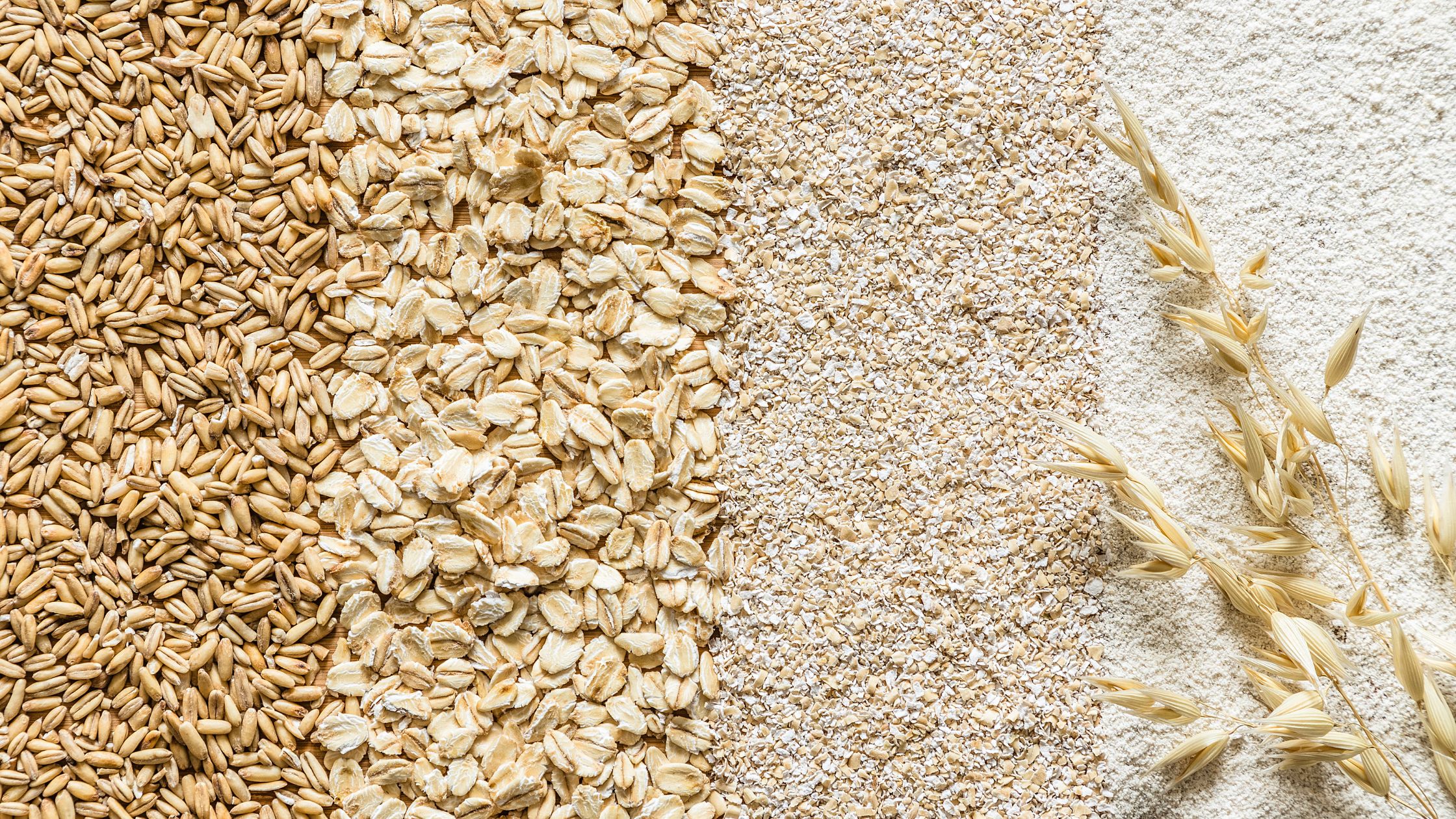
There are different forms of oats available, this is important to keep in mind when choosing which ones to eat.
Quick or instant oatmeal – this is not a good choice because the oats are rolled into flakes and then cut up broken down. This form of oatmeal goes through your body too quickly and can affect blood sugar levels. It's also highly processed which typically means less nutritious. This tends to be the type of oats present in those quick fix oatmeal packets.
Old fashioned or rolled oats – these are a good option. Some of the bran is removed during the rolling, or flaking process, but this is still a lower process version. It tends to be the one recommended for cereals, and for use in other recipes. Rolled oats may
Oat groats – the groats are the whole grain, meaning they have all of the fiber and the beneficial germ. These take a long time to cook and are very chewy and dense. Due to the high level of fiber these take a long time to cook. The groats are also what is ground up and used to make oat flour.
Steel cut oats – these are sometimes also called Irish Oats. For steel-cut oats the groat has been cut apart into smaller pieces. Because it’s still very dense and not rolled, steel cut oats can take a while to cook, but not as long as groats.
Oat bran – the bran is the outer coating of the groat and has the most fiber. This is sometimes removed from the groat and packaged for use either as a cereal or to put into other recipes to increase the fiber content.
Recipes
One cup of oats per day is beneficial, especially if you have high cholesterol or are looking for foods to help stabilize blood sugar. Below are a few of my favorite recipes using oats.
Freydis' Fabulous Pudding
- 1 C. steel cut oatmeal
- 4 C. water
- 1 C. milk
- 2 eggs
- 1 C. sucanat
- 2 T. butter
- 1/2 t. ground cinnamon
- 1/2 C. raisins
Toast the oatmeal in a pan until lightly browned
Bring the water to a boil, add the oatmeal, reduce heat and cook 20 minutes until done
Preheat oven to 350 deg F
Oil the inside of a 1.5 quart baking dish
In a large bowl mix together milk, eggs, sucanat, butter and cinnamon
Add in raisins and oatmeal
Pour into baking dish
Bake 30-35 minutes until doneCan be served warm, room temperature or cold. Option: Sometimes I vary this by substituting apple pie spice for the cinnamon and chopped dried apple for the raisins. Delicious! Enjoy!
If you’re looking for a quick and easy breakfast that’s ready when you wake up the solution is overnight oats. This recipe goes together very easily and adds a little Greek yogurt for an extra protein boost. The recipe can easily be doubled or tripled if there are multiple family members to feed or if you’re looking to get a head start on the next three days.
Blueberry Overnight Oats
- ⅓ cup old-fashioned oats
- ⅓ cup plain organic, whole milk Greek yogurt
- ⅓ cup plain almond milk
- 1 tablespoon chia seeds
- ½ tablespoon or honey
- 1 teaspoon vanilla extract
- ¼ teaspoon cinnamon
- ¼ cup organic blueberries
In a medium mixing bowl combine oats, almond milk, chia seeds, yogurt, honey, and vanilla until fully combined
Cover the bowl and place in the refrigerator overnight
In the morning serve oatmeal into two containers
Top with cinnamon and blueberriesEnjoy!
Cinnamon is a favorite way to flavor oatmeal. This is a warm and simple way to start your day. And as I know from when I had kids in the house, this recipe quadruples easily. If you’re looking for a slightly more flavorful punch you can substitute pumpkin pie spice for the cinnamon.
Simple Cinnamon Oatmeal
- ½ cup of water
- ¾ cups old-fashioned rolled oats
- ⅛ teaspoon salt
- 1 cup almond milk
- ¼ teaspoon real vanilla
- 1 tablespoon organic butter
- Toppings: cinnamon, maple syrup, and chopped almonds
Put the water in a small pan and bring it to a boil
Add the oats, salt, and ¾ cup of milk
Reduce heat to a simmer for 4 - 5 minutes
Stir in the butter and remaining milk
Remove pan from heat and let the mixture cool slightly
Stir in vanilla, add toppings and serve
[expand title=”Sources”]
Dioum, El Hadji M. et al. “Oats Lower Age-Related Systemic Chronic Inflammation (Iage) In Adults At Risk For Cardiovascular Disease”. Nutrients, vol 14, no. 21, 2022, p. 4471. MDPI AG, doi:10.3390/nu14214471.
Martinez-Villaluenga, C. and Penas, E. Health Benefits of Oat: Current Evidence and Molecular Mechanisms. Institute of Food Science. Technology and Nutrition (ICTAN-CSIC), Juan de la Cierva 3, 28006 Madrid, Spain. 23 January 2017. https://doi.org/10.1016/j.cofs.2017.01.004
Paudel, D.; Dhungana, B.; Caffe, M.; Krishnan, P. A Review of Health-Beneficial Properties of Oats. Foods 2021, 10, 2591. https://doi.org/10.3390/foods10112591
Spector Cohen, Inna et al. “To Be Oats Or Not To Be? An Update On The Ongoing Debate On Oats For Patients With Celiac Disease”. Frontiers In Pediatrics, vol 7, 2019. Frontiers Media SA, doi:10.3389/fped.2019.00384.
[/expand]
